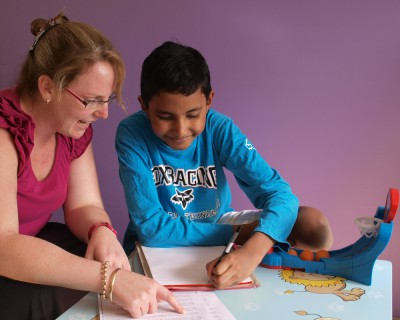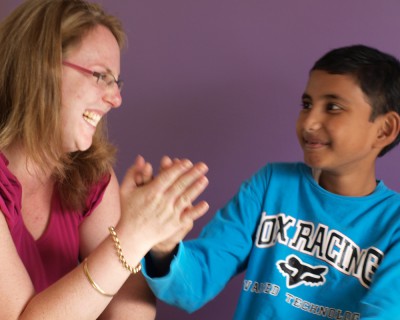School Age - Parramatta Speech, Language and Literacy Solutions
 Communication Difficulties
Communication Difficulties
School age children may demonstrate any of the communication difficulties observed in infants and preschoolers, as well as any of the following:
- Auditory memory difficulties – Difficulty processing, understanding and recalling instructions and other verbal information (particularly when instructions become longer and more complex, as in the classroom environment).
- Difficulty understanding and using more complex WH- questions (e.g. when, why, how)
- Difficulty describing people, places and things using a range of adjectives (i.e. describing words), such as ‘tall’, ‘short’, ‘young’, ‘old’, ‘pretty’, ‘ugly’, ‘happy’, ‘miserable’, ‘hard’, ‘soft’, ‘rough’, ‘smooth’ etc.
- Difficulty understanding and using a range of more complex prepositions (i.e. location words), such as ‘behind’, ‘in front of’, ‘adjacent to’, ‘parallel to’.
- Difficulty understanding and using passive sentences (e.g. ‘The girl was pushed by the boy’ as opposed to ‘The boy pushed the girl’).
- Difficulty understanding and using the correct present, past and future tense of both regular and irregular verbs (e.g. walk → walked → will walk; fly → flew → will fly)
- Poorly structured sentences that are difficult for listeners to understand.
- Incorrect use of pronouns (e.g. he, she, they; his, her, their).
- Incorrect production of plurals (e.g. horse → horses; baby → babies).
- Difficulty constructing a coherent, well-structured narrative.
- Difficulty writing for a variety of purposes (e.g. to inform, to persuade, to challenge / debate).
 Literacy Difficulties
Literacy Difficulties
School age children may also demonstrate literacy difficulties, such as any of the following:
- Poor letter-sound correspondence (i.e. knowing that each letter of the English alphabet has a corresponding sound).
- Poor understanding that words are made up of sounds, which can be manipulated (e.g. blended together, omitted) to form new words. This is referred to as Phonological Awareness and includes skills such as:
- Identifying rhyming words (e.g. bat, cat, fat, gnat, hat, mat, pat, rat, sat, flat, splat).
- Identifying initial and final sounds in words (e.g. ‘ship’: Initial sound = ‘sh’, final sound = ‘p
- Being able to segment, or break down, words in to their component sounds (e.g. ‘cat’ → c + a + t).
- Being able to blend sounds together to form words (e.g. b + i + n = ‘bin’).
- Knowing how to omit or add sounds in order to make new words (e.g. ‘spin’ → take away the first sound (‘s’) and you’re left with ‘pin’; ‘drink’ → Add an ‘s’ sound and you make ‘drinks’).

- Difficulty reading fluently (i.e. smoothly), confidently and with appropriate punctuation (e.g. pausing at a full stop, pausing briefly at a comma).
- Poor reading comprehension (i.e. being able to understand text that has been read aloud or read silently to oneself).
- Poor inferencing – i.e. the ability to use one’s knowledge of the world, as well as clues presented in the text, to draw logical conclusions about people, places or things and to predict what may happen next (e.g. To predict what a character in a story may think / say /do next, given the information that has been provided about how he/she is thinking or feeling about events that have occurred).
- Difficulty with spelling a variety of age appropriate words.
- Difficulty with writing to dictation.



